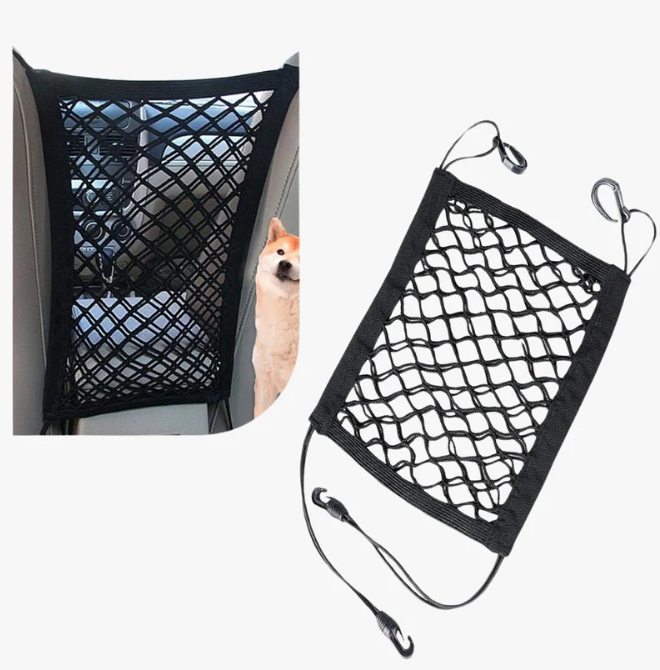Traveling with your dog can be one of life’s great joys—or a frustrating and stressful ordeal for both of you. If your dog paces, whines, or tries to climb into the front seat while you’re driving, it’s not just a distraction—it’s a hazard. A car pet barrier is a simple, effective solution that helps reduce anxiety for your furry friend and ensures a safer, calmer journey for everyone involved.
Below, we’ll explore how car pet barriers work, why they ease travel stress, and how they integrate with other car comfort solutions to create the ideal pet-friendly ride.
Why Dogs Get Anxious During Car Rides
Dogs often associate car rides with uncertainty, whether it’s a vet visit or an unfamiliar destination. Even excited dogs can become overstimulated by movement, sounds, or the presence of people and other vehicles. Here are a few common causes of travel anxiety:
- Lack of boundaries – Dogs roaming freely may feel insecure without a defined space.
- Overstimulation – Constant visual and auditory stimuli can overwhelm your pet.
- Separation from their human – Sitting in the back seat or cargo area without being near you may cause stress.
- Motion sickness or discomfort – Bumpy rides and tight spaces can increase physical discomfort, which feeds anxiety.
This is where the car pet barrier plays a crucial role—not just as a safety tool, but as a psychological aid.
How a Car Pet Barrier Reduces Stress for Dogs
Creates a Secure, Defined Space
Dogs are den animals by nature. Giving them a clearly defined area within the vehicle mimics the safety of a crate or bed. A car pet barrier restricts access to specific parts of the car, allowing your dog to settle without constantly readjusting or trying to move around. This structure can be incredibly calming, especially for high-strung or easily excitable dogs.
Minimizes Driver Distraction
When a dog tries to climb into the front seat or continually nudges the driver, it can create an unsafe situation. A car pet barrier not only protects the driver from distractions but also helps the dog feel less responsible for engaging with the front seat. By removing access to the driver, dogs often relax more quickly and can settle into the journey.
Reduces Motion-Related Anxiety
With a barrier in place, dogs are less likely to pace or turn circles during the ride. Being confined to one section of the car helps reduce motion-related disorientation, allowing your dog to lie down comfortably and experience fewer triggers.
Integrates with Comfort Accessories
Pairing a car pet barrier with comfort-enhancing products, like a heated car seat cover in colder months, can create a cozy, calm environment. Dogs are extremely sensitive to temperature, and combining physical separation with warmth and familiarity helps regulate both stress and body temperature.
Types of Car Pet Barriers: Which One Is Best for Your Dog?
Mesh Barriers
Ideal for small to medium dogs, mesh barriers are soft, breathable, and easy to install. They're less intimidating and offer good visibility, which helps ease separation anxiety.
Metal or Tubular Barriers
These are more durable and often used for larger breeds. They create a more secure boundary, especially in SUVs or station wagons, where dogs are in the cargo area.
Adjustable Tension Barriers
Perfect for temporary setups or rental cars, these barriers don’t require tools or permanent installation. They're a great choice for frequent travelers or families with multiple vehicles.
Conclusion
Traveling with your dog doesn’t have to be stressful. By introducing a car pet barrier, you not only enhance the safety of your vehicle but also provide your dog with the security and structure they crave during travel. Pair that with other thoughtful additions—like temperature control, hydration options, and their favorite blanket—and you create a travel-ready environment that reduces anxiety and encourages relaxation.
The result? Happier trips, safer drives, and a dog who might just start loving the ride as much as the destination.





Comments